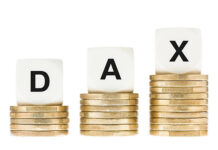Markets
Markets showed a nervous start to the new year as investors failed to detect a clear directional trading narrative. Should investors trade the hope on normalization as vaccinations have started or will the impact of the new corona wave dominate sentiment short term? A similar indecisiveness is at work with respect to the outcome of the Senate rat race in Georgia. It will decide whether the Biden administration will have its hands free to implement further fiscal support or whether it will be at the mercy of permanent compromising with the Republican opposition. Even more, investors remain highly indecisive on what a ‘blue sweep’ should mean for US (and global) markets going forward. Will more stimulus support a continuation of the reflation trade or will more regulation and/or higher taxes make investors see the glass half empty rather than half full? As was the case yesterday, uncertainty on US side of the story also set the tone for the intraday price action today. At the open, European markets drew some comfort from Asia’s resilience to yesterday’s WS setback. European equities opened with a bleak tint of green but sentiment again dwindled going into the start of the US dealings. Most European indices are ceding 0.50%/0.75%. WS opened unchanged to tentatively stronger. German November retail sales and December labour data (cf infra) suggest activity to show some resilience despite the new corona wave, but the reports were largely ignored. On the interest rate markets, both US and European yields were looking for a bottom after yesterday’s setback, even as sentiment on risk remained cautious. The US yield curve bear steepens with yields rising between 0.2 bp and 3 bp (30-y). German yields are gaining 0.4 bp (2-y) to 2.0 bp (30-y). The risk-off yesterday caused a modest widening in intra-EMU government spreads. However, this didn’t prevent first sales of bonds with longer maturities of Ireland (10-y) and Italy (15-y 2037) to attract ample investor interest of €48 bln (sold 5.5 bln) and € 105 bln (sold 10 bln) respectively. 10-y spreads today were little changed to marginally tighter (Spain -2 bp). Oil (Brent $52.50) rebounded after yesterday’s decline as OPEC+ restarts talks. Yesterday, a call of Russia for a production hike met broad opposition from a group of countries lead by Saudi-Arabia.
The less constructive risk sentiment still doesn’t improve sentiment on the dollar in any profound way. The US currency didn’t succeed any sustained follow-through gains on yesterday late session risk-off driven rebound. The trade-weighted dollar fails to regain the 90 barrier (0.8970). EUR/USD (1.2270) is keeping the cycle top within reach. The USD/JPY (102.85) downtrend remains in place. Sterling also remains in the defensive. The UK currency hardly profited from the brexit deal and the economic damage from the new lockdowns is keeping the debate of further BoE rate cuts alive. £4.6 bln of additional support announced by the UK Treasury didn’t change fortunes for the UK currency. EUR/GBP settled well north of the 0.90 big figure (currently 0.9040 area).
News Headlines
Polish central bank (NBP) governor Glapinski repeated in an interview with financial news website Obserwator Finansowy that it would be possible to further lower interest rates in Q1 2021 in the event of a third Covid-wave in the winter months. The central bank’s base rate currently stands at 0.1%, implying a hint at introducing negative rates. The NBP governor added that this isn’t the base scenario. Glapinski also confirmed that the NBP has been intervening in the FX market since mid-December in order to strengthen the impact of the NBP’s monetary policy on the economy. EUR/PLN rose from 4.45 towards 4.60 resistance in the second half of December. The pair currently changes hands near 4.55.
German eco data beat forecasts today. November retail sales rose by 1.9% m/m while consensus feared a 2% m/m contraction. Online transactions and spending on home improvement drove the increase with the country in partial lockdown. The Federal Statistics Office expects retail sales to have increased by 4% during 2020 (vs +3.2% in 2019). Separately, December labour market data showed a 37k decline in unemployment while consensus expected a 10k increase. The outcome is a surprise with Germany in lockdown in December and skewed by government subsidies to keep workers on board.













